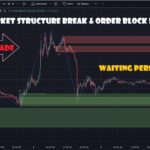Introduction:
Trading 30-minute charts has emerged as a popular strategy among traders seeking to capitalize on short-term price movements while minimizing prolonged market exposure. By focusing on this specific time frame, traders can navigate the markets with precision, identifying trends and patterns that present lucrative trading opportunities.
In this comprehensive guide, we will provide a step-by-step approach to successful trading on 30-minute charts. From understanding the advantages of this time frame to developing effective strategies, we will equip traders with the knowledge and tools needed to excel in this dynamic market environment.
Why Trade on 30-Minute Charts?
Trading on 30-minute charts offers several advantages. This timeframe strikes a balance between shorter intervals used by day traders and longer timeframes preferred by long-term investors. With 30-minute charts, traders can capture short-term trends while avoiding excessive market noise, enabling them to make timely and informed trading decisions.
Key Topics Covered in This Guide:
- Understanding 30-Minute Charts: Discover the unique characteristics of 30-minute charts and their relevance to short-term trading.
- Developing a Trading Strategy: Learn how to set clear objectives, identify suitable trading instruments, and implement risk management techniques tailored to 30-minute chart trading.
- Technical Analysis Techniques: Explore candlestick patterns, support and resistance levels, trendlines, moving averages, and oscillators for effective analysis of 30-minute charts.
- Entry and Exit Strategies: Discover how to identify high-probability entry points, manage trade exits, and incorporate volume analysis into your trading decisions.
- Risk Management: Master position sizing, set appropriate stop-loss levels, and cultivate disciplined trading habits for long-term success.
- Case Studies and Examples: Analyze real-life trades and learn from successful strategies, as well as valuable lessons from trades that didn’t meet expectations.
By following this step-by-step guide, traders will gain the necessary skills and insights to navigate 30-minute charts confidently, increasing their chances of profitable trades and minimizing risks.
Remember, trading on 30-minute charts requires discipline, continuous learning, and adaptability to changing market conditions. We recommend consulting with a financial advisor or conducting thorough research before making any investment decisions.
Join us on this journey as we unlock the potential of trading on 30-minute charts and empower you to achieve success in the exciting world of short-term trading.
Understanding 30-Minute Charts: A Comprehensive Guide to Mastering Short-Term Price Action
In the fast-paced world of financial markets, traders are constantly searching for strategies that offer an edge in capitalizing on price movements. Among these strategies, understanding 30-minute charts has gained prominence, providing traders with a powerful tool to navigate the dynamic world of short-term trading. In this comprehensive guide, we will delve into the intricacies of 30-minute charts, exploring their unique characteristics and how they can be harnessed to make informed trading decisions.
Chapter 1: Unveiling 30-Minute Charts
- Defining 30-minute charts: An overview of this specific timeframe and its significance in trading.
- Advantages of using 30-minute charts: How this timeframe balances short-term and long-term perspectives.
- Timeframe selection: Understanding the relevance of 30-minute charts in various trading strategies.
Chapter 2: The Building Blocks of 30-Minute Charts
- Candlestick patterns: Analyzing price action through candlestick formations on 30-minute charts.
- Support and resistance levels: Identifying key price levels that influence market movements.
- Trendlines and channels: Recognizing trends and channels to gauge the market’s direction.
- Moving averages: Utilizing moving averages as trend indicators for effective trading decisions.
Chapter 3: Technical Analysis Techniques for 30-Minute Charts
- Oscillators: Understanding momentum indicators to identify overbought and oversold conditions.
- Volume analysis: Interpreting trading volume to validate price movements and trends.
- Price patterns: Recognizing chart patterns specific to 30-minute charts and their implications.
Chapter 4: Developing a Winning Strategy on 30-Minute Charts
- Setting clear objectives: Defining trading goals and aligning them with the chosen timeframe.
- Risk management: Implementing position sizing, stop-loss, and take-profit strategies for disciplined trading.
- Combining indicators: Creating a powerful trading strategy by synergizing different technical tools.
Chapter 5: Executing Trades on 30-Minute Charts
- Identifying entry points: Using technical analysis to spot high-probability entry opportunities.
- Trade management: Techniques to manage open positions and adjust stop-loss levels dynamically.
- Taking profits: Strategies for capturing gains efficiently in short-term trades.
Chapter 6: Practicing Patience and Discipline
- Avoiding overtrading: The importance of waiting for the right setups and exercising patience.
- Emotion management: Controlling emotions during high volatility and fast-moving markets.
Chapter 7: Real-Life Examples and Case Studies
- Examining successful trades: Analyzing real-life examples of profitable trades on 30-minute charts.
- Learning from mistakes: Understanding how to mitigate losses and learn from unsuccessful trades.
Conclusion:
Understanding 30-minute charts can be a game-changer for traders looking to thrive in the world of short-term trading. Armed with technical analysis tools and a well-defined strategy, traders can unlock the potential of 30-minute charts, identifying lucrative opportunities while managing risks effectively. Remember, successful trading requires continuous learning, discipline, and adaptability to evolving market conditions.
As you embark on your journey to master 30-minute charts, always prioritize risk management and never stop refining your skills. With dedication and practice, you can harness the power of 30-minute charts to make informed trading decisions and achieve your financial goals. Happy trading!
Concept of Timeframes in Trading:
In the world of trading, time is a crucial factor that influences decision-making and trade outcomes. Understanding the concept of timeframes is essential for traders as it provides a framework for analyzing price movements, identifying trends, and executing effective trading strategies. In this comprehensive guide, we will delve into the concept of timeframes in trading, exploring their significance, different types of timeframes, and how they can be used to enhance trading performance.
Chapter 1: What Are Timeframes in Trading?
- Definition of timeframes: An introduction to the concept and its role in analyzing price data.
- Significance of timeframes: Understanding how timeframes affect trading decisions and risk management.
- Choosing the right timeframe: Factors to consider when selecting a timeframe that aligns with trading goals and strategies.
Chapter 2: Exploring Different Types of Timeframes
- Long-term timeframes: Understanding the characteristics and benefits of long-term charts, such as monthly and weekly timeframes.
- Intermediate timeframes: Analyzing the features of intermediate timeframes, including daily and 4-hour charts.
- Short-term timeframes: Examining the advantages and considerations of short-term charts, such as hourly, 30-minute, and 15-minute timeframes.
Chapter 3: Using Multiple Timeframes for Analysis
- Multiple timeframe analysis: How combining different timeframes can provide a comprehensive view of price movements and trends.
- Identifying trend direction: Using higher timeframes to determine the overall trend and lower timeframes for precision entries.
- Spotting key support and resistance levels: Analyzing price levels across multiple timeframes to identify significant areas of buying and selling pressure.
Chapter 4: Timeframe-Specific Trading Strategies
- Long-term trading strategies: Exploring position trading and trend-following approaches that align with longer timeframes.
- Swing trading strategies: Utilizing intermediate timeframes to capture shorter-term price swings and profit from market fluctuations.
- Scalping strategies: Understanding how short-term timeframes can be leveraged for quick trades and small but frequent gains.
Chapter 5: Factors to Consider When Choosing a Timeframe
- Trading style and personality: How your preferred trading style and temperament should influence your choice of timeframe.
- Volatility considerations: Adjusting the timeframe based on market volatility and the desired level of trading activity.
- Time availability: Balancing time constraints with the chosen timeframe to ensure effective trade management.
Chapter 6: Charting Tools and Indicators for Different Timeframes
- Technical indicators: Selecting indicators that complement the chosen timeframe and provide relevant insights.
- Chart patterns: Identifying patterns specific to different timeframes, such as daily or intraday patterns.
- Customizing chart settings: Adjusting chart intervals and settings to match the selected timeframe.
Chapter 7: Adapting to Changing Timeframes
- Recognizing market conditions: Knowing when to switch between different timeframes based on market volatility, news events, and changing trends.
- Flexibility in trading strategies: Being open to adjusting trading approaches based on the timeframe that best suits the current market environment.
Conclusion:
Understanding the concept of timeframes in trading is crucial for traders seeking to make informed decisions and achieve consistent profitability. By analyzing price data across different timeframes, traders gain valuable insights into market dynamics, identify trends, and execute well-timed trades. Whether you prefer long-term investing, swing trading, or scalping, choosing the right timeframe that aligns with your trading goals and strategies is essential. Continuously honing your skills in analyzing different timeframes and adapting to changing market conditions will empower you to navigate the world of trading with confidence and achieve long-term success.


![Mastering Advance Option Chain Tool [AOC]: A Trader’s Key to Success](https://seorub.com/wp-content/uploads/2023/07/A-trader-life-with-advance-option-chain-tool-AOC1-150x150.jpg)



